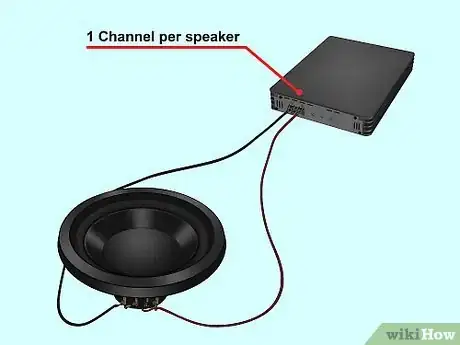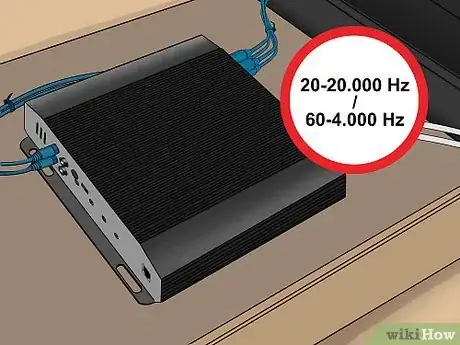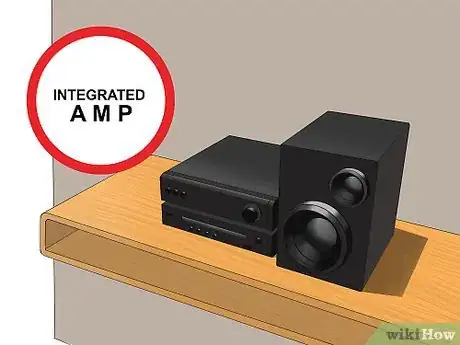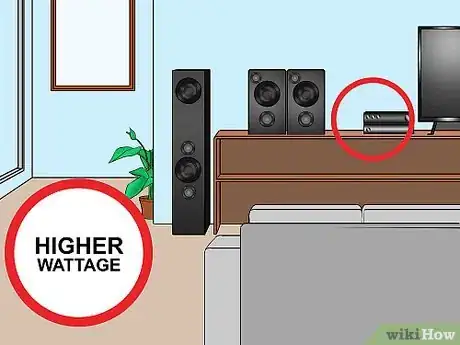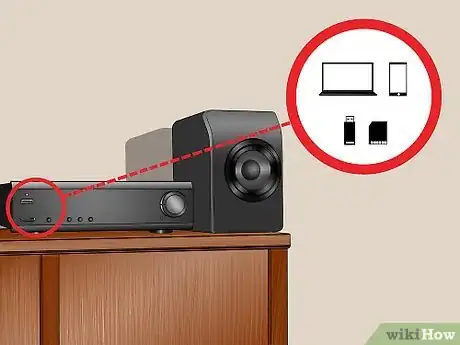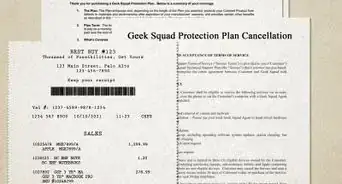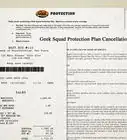This article was co-authored by wikiHow staff writer, Hunter Rising. Hunter Rising is a wikiHow Staff Writer based in Los Angeles. He has more than three years of experience writing for and working with wikiHow. Hunter holds a BFA in Entertainment Design from the University of Wisconsin - Stout and a Minor in English Writing.
There are 7 references cited in this article, which can be found at the bottom of the page.
This article has been viewed 42,285 times.
Learn more...
Amplifiers use an electrical current to increase the volume of your music when you listen to it through speakers. If you want to listen to crisp and clean audio, getting the right amplifier for your car or home is a necessity. By researching different brands and finding the right features for your space, you’ll be able to jam wherever you go!
Steps
Picking an Amplifier for Your Car
-
1Get an amp with 1 channel per speaker in your vehicle. Channels carry different sounds to your speakers, and if you don’t have enough channels, then the sound won’t come out clearly. Count how many speakers you have in your vehicle to determine how many channels your amplifier should have. If you’re only using an amp for a subwoofer or a single speaker, get a mono channel amplifier. For powering multiple speakers, get up to a 6 channel amp.
- Use 1 amp to run your subwoofer and another to run the rest of your speakers. That way, your subwoofer and other speakers have their own channels and reach their full potential.
-
2Choose a higher wattage for better sound. The amount of wattage your amplifier puts out is the electrical power. Look near the ports on the back of your speakers to see what their rated powers are. Find an amplifier that gives you a 10% higher rating than what’s recommended by your speakers to give them the best sound output.[1]
- Usually for a vehicle, 100 watts per channel will be enough power for high-quality sound.
- For example, if you have a speaker rated at 90 watts, get an amplifier that puts out 100 watts.
Advertisement -
3Find an amplifier with a direct connection to your receiver to preserve sound quality. Units with preamp outputs make your sound clearer since they are directly connected to their receivers. Look at the amp’s packaging to see if it has a direct connection. If you don’t have a unit with a pre-amp, you’ll have to run speaker wires from each speaker to your receiver and may suffer a drop in sound quality.[2]
- Look for direct connection amps made by Kenwood or Rockford Fosgate for around $150-200 USD.
-
4Pick an amp with a remote to control it easier. Amplifiers are usually out of reach when you’re driving your vehicle, so opt for one you can control remotely. This allows you to easily adjust the amplifier’s sound settings based on what music you’re listening to.
- Remotes can also be used to turn your amplifier on and off when you aren’t using it.
-
5Get your amp with a wide range of frequencies. Amplifiers with a wide frequency range can pick up a larger range of tones than ones with narrow ranges. Find a car amp that offers a range like 20-20,000 Hz since it will cover the full audio range.[3]
- If you’re on a budget, aim to get an amp with a 60-4,000 Hz for an ample range of sound.
Audio Ranges Broken Down
Sub Bass (20-60 Hz): Creates a bass feeling that you feel more than you hear
Bass (60-250 Hz): Makes your sound fuller and picks up on most bass signals
Low Midrange (250-500 Hz): Adds clarity to bass instruments
Midrange (500-2,000 Hz): Makes prominence to instrument sound
Upper Midrange (2,000-4,000 Hz): Adds attack to percussive and rhythm instruments
Presence (4,000-6,000 Hz): Creates clarity and definition to your sound
Brilliance (6,000-20,000 Hz): Responsible for harmonics
Choosing a Home Stereo Amp
-
1Select an integrated amp to save on costs. Integrated amps have preamps, which handle your input selection, and power amps, which put out the sound, in the same cabinet. If you want an easy audio solution and you’re on a budget, consider an integrated amp. If you want the choice to scale up your speakers in the future, you’ll need to buy a separate preamp and power amp.[4]
- If you purchase an integrated amp, you won’t be able to mix and match different types of amplifiers.
Integrated Amp Brands and Prices as of Sept. 2018
• Alpine: $400-$900 USD
• Kenwood: $150-200 USD
• NAD: $399 USD
• Rockford Fosgate: $200 USD -
2Pick a higher wattage for a larger room and better sound quality. If you have your speakers in your home, amplifiers with a 100-200 watt output per channel should be enough to fill the room with sound. If you’re hosting parties or entertaining, find an amp as high as 300 watts to make sure your music is loud enough.[5]
- Your speakers are more likely to blow if you use an amplifier with lower wattage.
-
3Find an amplifier with multiple input connections for versatility. Look for an amplifier with USB and standard auxiliary ports so you can connect a variety of devices to it. With a variety of jacks, you can plug turntables, computers, or phones into the amplifier. Research which ports come on the amplifier you’re interested in.[6]
- Getting an amp with multiple imports allows you to easily change the speakers just by unplugging a few wires.
-
4Get an amp with a high signal to noise ratio to eliminate background noise. Signal to noise ratio refers to the amount of static background noise you hear when you play music through your amplifier. Look for an amplifier with a signal to noise ratio close to 80 decibels.[7]
- Amplifiers with a lower signal to noise ratio will sound staticky and you may hear a buzzing noise.
- If you have a higher budget, purchase an amp with a higher signal to noise ratio.
Warnings
- Turn off your amp before working on any components inside of it.⧼thumbs_response⧽
- Mount amplifiers where they get airflow, or else they could overheat.⧼thumbs_response⧽
References
- ↑ https://hometheaterreview.com/how-to-pick-the-right-amp-for-your-speakers-or-vice-versa/
- ↑ https://www.amplifierexperts.com/how-to-choose-a-car-amplifier/
- ↑ https://www.teachmeaudio.com/mixing/techniques/audio-spectrum/
- ↑ https://www.themasterswitch.com/integrated-amps-vs-pre-and-power-amps
- ↑ https://www.cnet.com/news/whats-up-with-watts-how-much-power-do-you-need/
- ↑ https://pitchfork.com/features/article/9871-how-to-buy-the-best-turntable-and-stereo-system-for-your-record-collection/
- ↑ http://www.bcae1.com/sig2nois.htm
